One day, future generations will look back on our era of dirty fossil fuels, and they’ll laugh at us for not being smart enough to get out energy from clean and efficient dead cats like they do.
Wait, what? If you thought that was a misprint, think again. In fact, cars and other vehicles have been run for decades on a variety of weird and wonderful power sources, with some of them a lot more workable than others.
Some might seem silly and others still might seem just plain dangerous, but if science proves correct and the earth’s fossil fuel resources dry up sooner rather than later, some of these odd alternatives might be all we have left.
1. Petrol and water
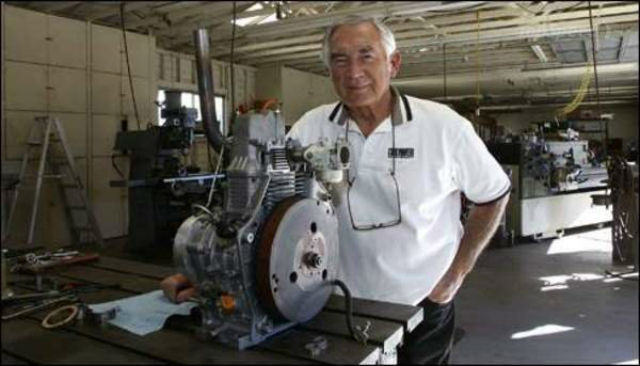
Veteran engine builder Bruce Crower designed a unique steam hybrid six-stroke motor that uses equal amounts of petrol and water to run, which delivers more power via less revolutions.
Crower’s design started as an exercise to try and harness normally-wasted heat energy by creating steam inside the engine’s combustion chambers and then using it to boost power output while also controlling temperatures.
“I’ve been trying to think how to capture radiator losses for over 30 years,” he said. “One morning about 18 months ago I woke up, like from a dream, and I knew immediately that I had the answer.”
Hurrying to his home workshop in the hills outside San Diego, he began machining parts and installing them in a highly-modified single-cylinder engine, which was then bolted to a test frame.
Exposing water to the hot engine pistons, the water cools the engine and simultaneously creates steam, which drives power for an extra steam-propelled power stroke.
2. Wood
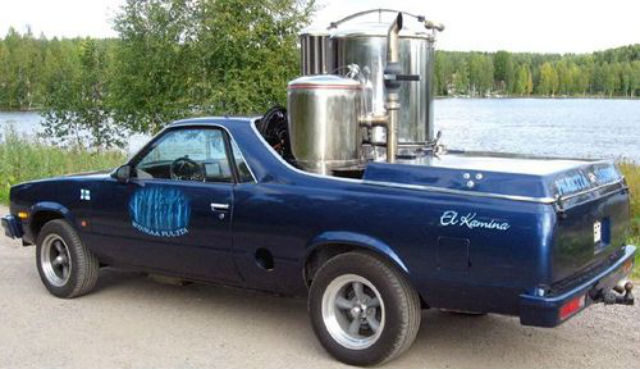
Finnish prime minister Juha Sipilä drives an old 1987 Chevrolet El Camino, which he converted to run on wood gas as part of his rather unique hobby developing wood gas power generation.
In a wood-powered car, the wood is gasified by exposing it to extremely high temperatures but without sufficient oxygen to make it combust, which creates a substance that the car’s regular combustion engine can burn without modification.
Sipilä’s car can be powered for around 125 miles on a full 79kg tank of wood chips, and can manage a top speed of 87mph on wood power alone.
Although it seems a little primitive, the wood gas system was actually widespread throughout Europe during the Second World War, when oil was scarce. Properly maintained systems can burn cleaner than traditional petrol, and remain popular in remote parts of Asia, including much of North Korea.
3. Coffee
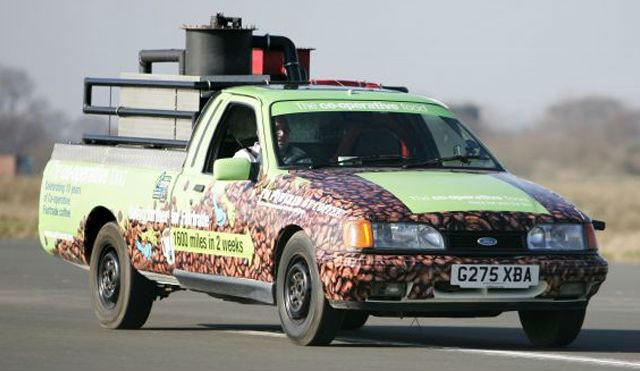
British inventor Martin Bacon officially holds the Guinness World Record for the fastest vehicle powered by coffee.
Bacon created his pick-me-up powered pick-up on the body of a Ford P100, and heats pellets made from coffee waste in a charcoal fire on the back of the truck, which converts the coffee into carbon monoxide and hydrogen.
The hydrogen produced can then be burned in the engine, which provides enough power to get the P100 to a top speed of 65.6mph. Bacon and his team have also built several other coffee cars, including a Mk2 Scirocco and a Rover SD1.
4. A real-life horse
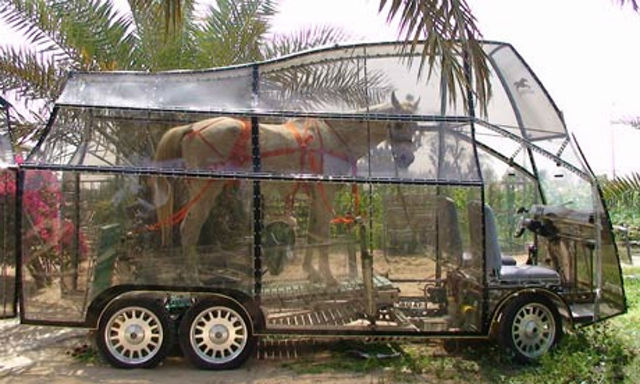
These days, it seems as though the entire industry is obsessed with big horsepower, but Iranian engineer Hadi Mirhejazi apparently took that a little bit too literally.
Mirhejazi is the creator of the Naturmobil, a hybrid electric vehicle which uses a real-life horse that walks on a treadmill, generating electricity for the batteries and electric motor.
Cruising speed for the Naturmobil is estimated at between 10 and 15mph, but the vehicle apparently can manage a top speed of 50 mph. Unlike traditional vehicles, the Naturmobil never needs to be recharged or refuelled, so long as your horse is alive, that is.
More than two years were spent building the vehicle, with the animal sitting under a jacket filled with cold water to keep it cool and content. For the more delicate problem of “emissions”, it features an extra-large colostomy bag, which collects waste beneath the treadmill.
There are a few drawbacks: the Naturmobile isn’t suitable for hot climates, motorways and main roads are likely off limits, and there’s also no partition between horse and driver.
5. Pedal power

Imagine a Porsche 911 with no complicated gearing system or heavy motor in the back. Instead, it’s just you, the pedals and the four wheels around you.
That’s exactly what artist Hannes Langeder created with his Ferdinand GT3 RS, the only problem being that it’s really more of a glorified bicycle than an actual car. On display at the Museum of Art Linz in Austria, it’s constructed entirely of aluminium foil, cardboard and a cycle cart.
Unlike the real GT3 RS on which it’s based, top speed clocks in at a heady 10mph, but only when pedalled really, really hard, but it does feature a special aero feature to “save the driver from sweating too much”.
Hannes said: “It is treated like a bicycle by the law and I wanted to show that a car needed no fuel. The most impressive feature is its extreme slowness. The slowness is a kind of luxury.”
6. Jet engines
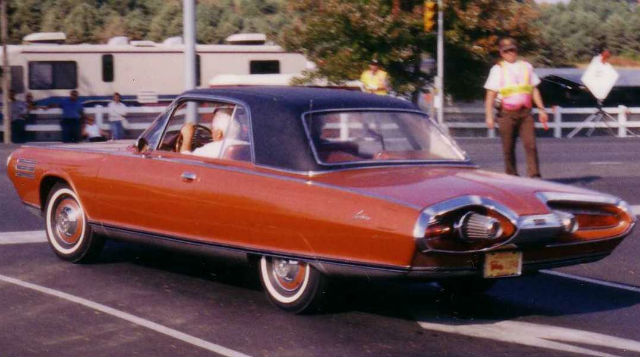
Back in the 50s, Chrysler got dangerously close to perfecting a jet turbine-powered car that could run on anything from petrol to jet fuel, vegetable oil, tequila and much more.
Over the next two decades, Chrysler’s Turbine Lab would build more than 70 jet cars, including a fleet of 50 that were lent to the public as part of an unprecedented publicity campaign.
In its most basic form, the jet turbine is a relatively simple concept. Imagine a tube with a fan at the front and one at the back. Run a shaft through both, spray fuel inside the tube and then set it alight.
The hot gases expand and force their way through the rotors, spinning the blades and sucking more air in to increase the power of the reaction. With enough speed, the contraption can generate enough thrust to run everything from a car to a jet fighter or even a train.
In fact, the only real complaint about Chrysler’s turbine car was its excessive and unusual noise.
7. Poop
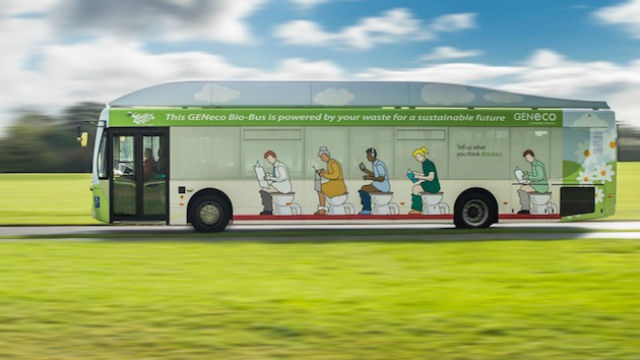
Last year, the UK’s first bus service powered by nothing other than human waste officially took to the streets of Bristol.
Named the Bio-Bus, it’s fuelled by biomethane gas which is produced at a sewage plant run by energy firm GENeco. According to GENeco’s technicians, a single tank of fuel can be produced using the waste of just five people, and can power the vehicle for up to 190 miles.
Believe it or not, vehicles outfitted with this sort of engine can perform almost identically to that of a petrol or diesel-fuelled model, but with dramatically fewer emissions.
The waste plant in Bristol treats 75 million cubic meters of sewage waste each and every year, and is able to produce 17 million tonnes of biomethane a year as a result.
8. Dead cats

A German boffin angered animal rights people after coming up with a technology that could power your car on fuel derived from the mashed-up remains of dead cats.
Inventor Christian Koch makes his unique bio-diesel from a closely-guarded secret recipe that includes household rubbish in addition to the dead moggies. According to him, he can run his normal diesel-powered car for more than 100,000 miles on cat power just as easily as he would on regular fuel.
His company Alphakat GmbH, says that the patented bio-diesel fuel can be produced for around 16p per litre. It takes 20 dead cats to produce enough fuel to fill up a 50-litre tank, but exactly where Koch gets the cats from hasn’t yet been made clear.



